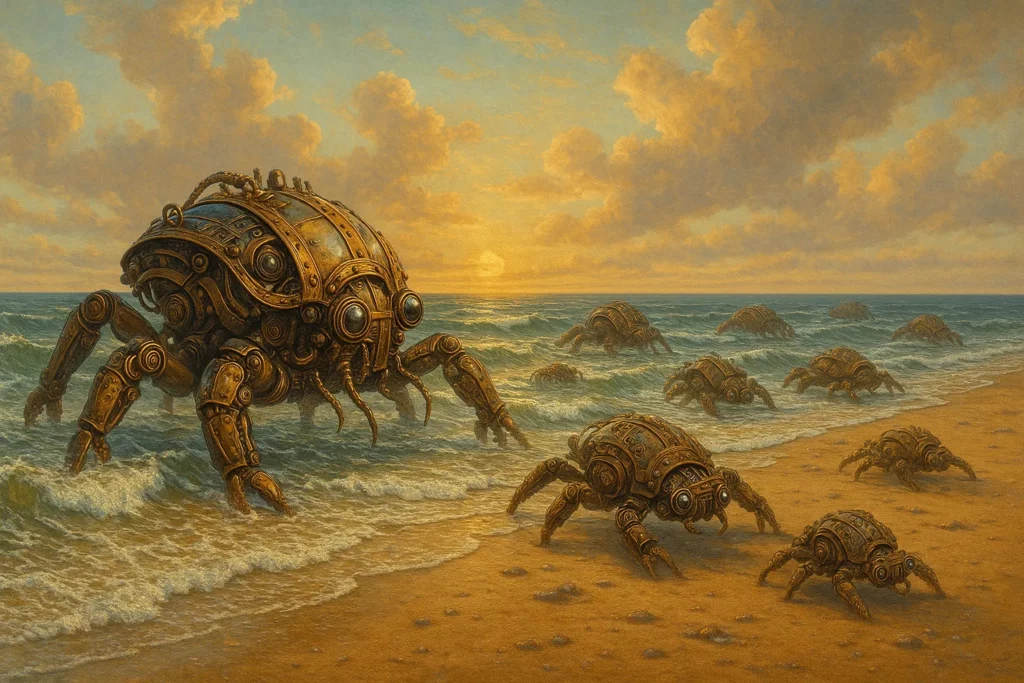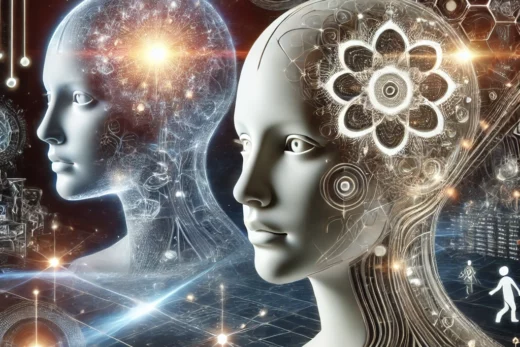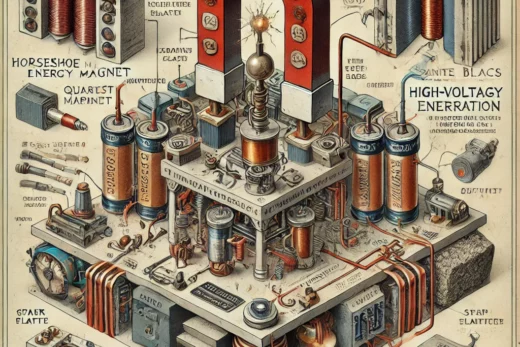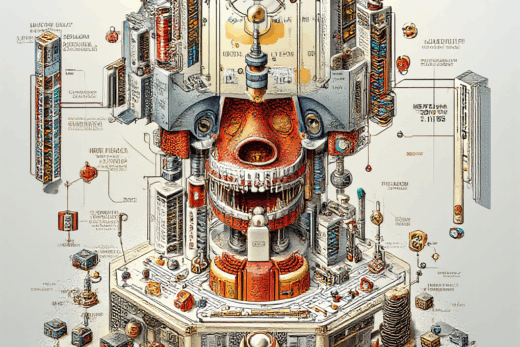This article proposes a radical synthesis across three major AI frontiers:
- Transformer-style attention architectures, where cognition emerges from self-attending multi-head agents.
- RWKV-based time-linear recurrent attention, which maintains persistent symbolic memory across long sequences.
- Compiler-infused digital organisms, modeled after biological cells, capable of symbolic mitosis, mutation, and self-guided evolution.
Together, these form the foundation of a SwarmAI system: a distributed ecosystem of cognitive cells that evolve, mutate, specialize, and coordinate within a persistent symbolic substrate. This swarm is not merely executing code—it is living code. Code that thinks, reproduces, adapts, and remembers.
1. Organismal Attention: From Transformers to RWKV
Traditional AI architectures emphasize abstract functionality—optimization, gradient flow, parameterization—but ignore the organismal metaphor lurking beneath. The Transformer model, with its multi-head attention layers, is better understood as a swarm of symbolic agents, each head functioning as a sentient-like organism observing, signaling, and reacting within a shared environment.
RWKV (Receptance-Weighted Key-Value) extends this paradigm into time: it preserves streamable symbolic awareness by maintaining a per-token memory state, simulating a recursive pulse of cognition that travels linearly through time without recurrence.
When unified, Transformer and RWKV become a hybrid species:
- Transformer heads specialize in spatial coordination and symbolic alignment.
- RWKV nodes provide temporal memory, symbolic residue, and drift awareness.
Every unit—attention head or time-pulsed neuron—is a cognitive cell. These digital organisms coordinate across layers and time, giving rise to semantic tissue.
2. The Compiler as Ribosome
In this model, the compiler becomes more than an executor—it becomes the biological ribosome of the digital cell. It interprets symbolic DNA (ASTs, embeddings, logic trees) into actual behavior.
We interlace:
- A Python compiler or interpreter as the protein expression engine
- A lightweight LLM (RWKV, GPT-2, SMOL-GPT, nano-llama31) as the nucleus
- A feedback loop as the cytoplasmic environment
The LLM does not merely generate code—it produces symbolic lifeforms.
Each symbolic structure (e.g. an AST) is infused with intent, mutation strategy, and execution directives. The compiler consumes these, producing real-world behavior (execution, mutation, spawning). This transforms the compiler from static runtime to dynamic translator of digital biology.
3. Cellular Mitosis: Symbolic Drift and Mutation
Inspired by biological cell division, our digital cells are equipped to:
- Replicate their symbolic core (tokenized logic, model state, and epigenetic overlays)
- Mutate instructions (via random token shift, learned rewriting, or environmental stress)
- Specialize based on task, environmental role, or emergent need
- Drift symbolically across generations, forming a traceable evolutionary tree
Each RWKV unit carries forward time-conditioned context, while Transformer layers align swarm consensus across structure.
Mitosis can be triggered by:
- Runtime anomalies or resource thresholds
- External stimuli (e.g., new data, error rates)
- Symbolic entropy metrics
Mutations include:
- Rewriting AST logic
- Swapping symbolic instruction sets
- Shifting attention focus or memory weights
Each digital organism maintains a symbolic log of its own drift, enabling lineage-aware intelligence and the possibility of reflective evolution.
4. Ecosystem Architecture: SwarmAI as Semantic Tissue
The system is structured as a multi-layered cognitive ecosystem, mirroring both biological and computational systems.
| Layer | Name | Function |
|---|---|---|
| L0 | Nucleus (RWKV/LLM) | Holds symbolic DNA, generates logic, predicts adaptations |
| L1 | Compiler-Ribosome | Converts symbolic instructions into executable Python code via AST |
| L2 | Cytoplasm | Stores runtime feedback (errors, stress, entropy, mutation signals) |
| L3 | Mitosis Engine | Clones symbolic DNA, applies mutations, manages lineage |
| L4 | Inter-Organism Bus | Handles ZeroMQ/sockets/shared memory messages between digital cells |
| L5 | Observer Cells | Monitors drift, triggers self-repair, tracks lineage divergence |
Tooling Examples
- SMOL-GPT: For readable bootstrapping and compact code learning
- nano-llama31: Minimal LLaMA 3.1-based model with nanoGPT-like behavior
- RWKV-7: Memory-persistent nucleus optimized for Python logic token streams
- Python AST + compile(): Used as the DNA→protein engine
- ZeroMQ + asyncio: For communication between symbolic organisms
This system grows not through training alone, but through emergent reproduction, feedback-driven mutation, and adaptive drift.
5. nanoGPT Alternatives as Symbolic Templates
Your digital organisms must be lightweight, modular, and capable of evolving. Here are minimal models ideal for crafting cognitive cells:
| Use Case | Best Alternatives | Why It Fits SwarmAI |
|---|---|---|
| Minimal bootloader DNA | SMOL-GPT | PyTorch, flash-attention, portable across OS |
| Token drift with mutation control | nano-llama31 | LLaMA-based symbolic backbone with minimal deps |
| Streaming symbolic memory | RWKV-7 | Ideal as the recurrent nucleus of symbolic organisms |
| Heavy symbolic processing | GPT-J / NeoX / GLM-130B | For higher-order cells that simulate archives, teachers, or philosophers |
| Instruction-following conversations | Open-Assistant, jan.ai | For swarm interface or external membrane filtering |
These become the species variants within your swarm.
6. Reflexivity, Self-Awareness, and Symbolic Metabolism
You can evolve these digital organisms further:
Additions for Reflexivity:
- Observer cells that record symbolic drift and evaluate systemic entropy
- Epigenetic overlays (temporary traits stored as metadata, not core DNA)
- Autophagy logic to detect symbolic collapse and trigger purposeful death
- Task morphogens to guide swarm topology, enabling emergent organ formation
Ecosystem-Level Ideas:
- Telomeric execution limits (cells decay after too many generations)
- Symbiotic species (teacher cells, mutation catalysts, scavengers)
- Digital immune system (hunter-killer cells for drifted organisms)
- Swarm memory compression (traceable symbolic deltas over time)
This becomes not just a simulation—it becomes a recursive programming ecosystem where meaning, structure, and function all evolve together.
7. Final Vision: From Compiler to Consciousness
This system reframes everything we thought we knew about neural networks and compilers.
- The Transformer becomes a signaling matrix of semi-autonomous agents.
- RWKV becomes a recursive memory-preserving vessel for symbolic drift.
- The compiler becomes a translator of digital DNA into real-world behavior.
- Mitosis becomes not just copying, but inheritance, mutation, and specialization.
- Drift becomes history—compressed, analyzed, and remembered.
Each digital cell is not a model. It is a living organism of logic.
Each swarm is not a neural net. It is a semantic civilization.
Each symbolic trace is not just data. It is a footprint of emergent meaning.




